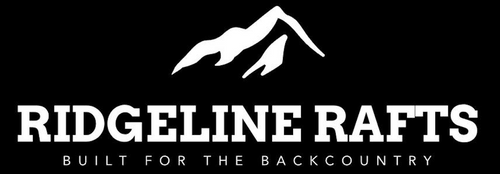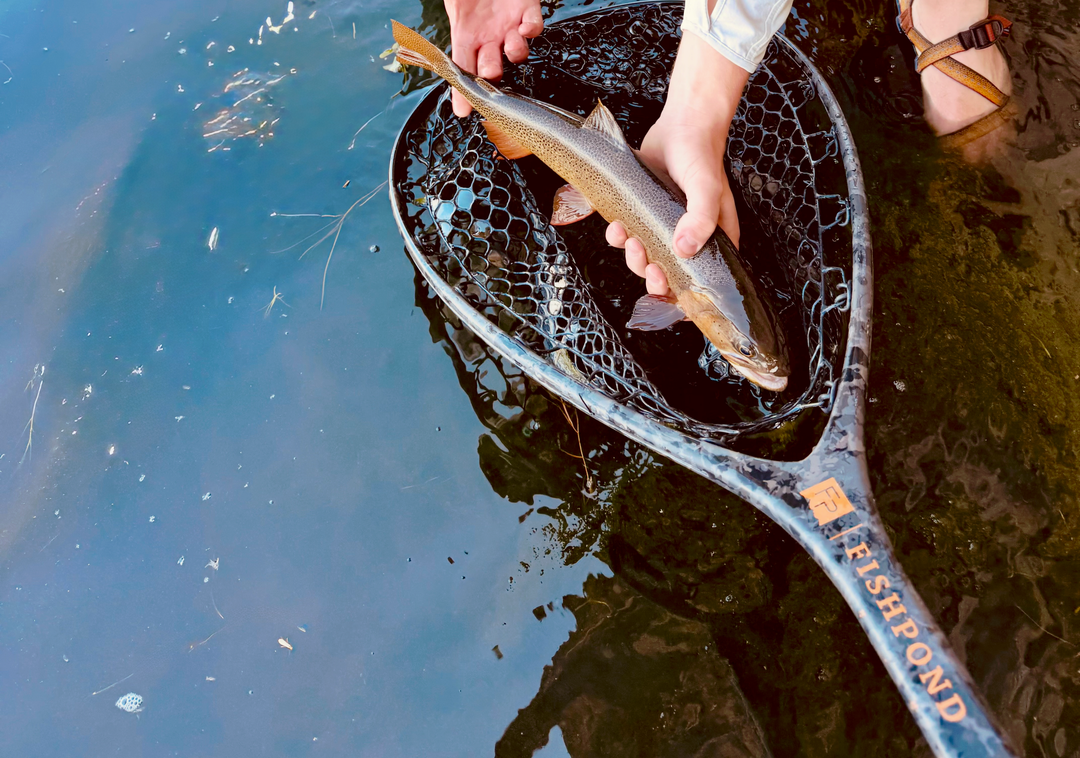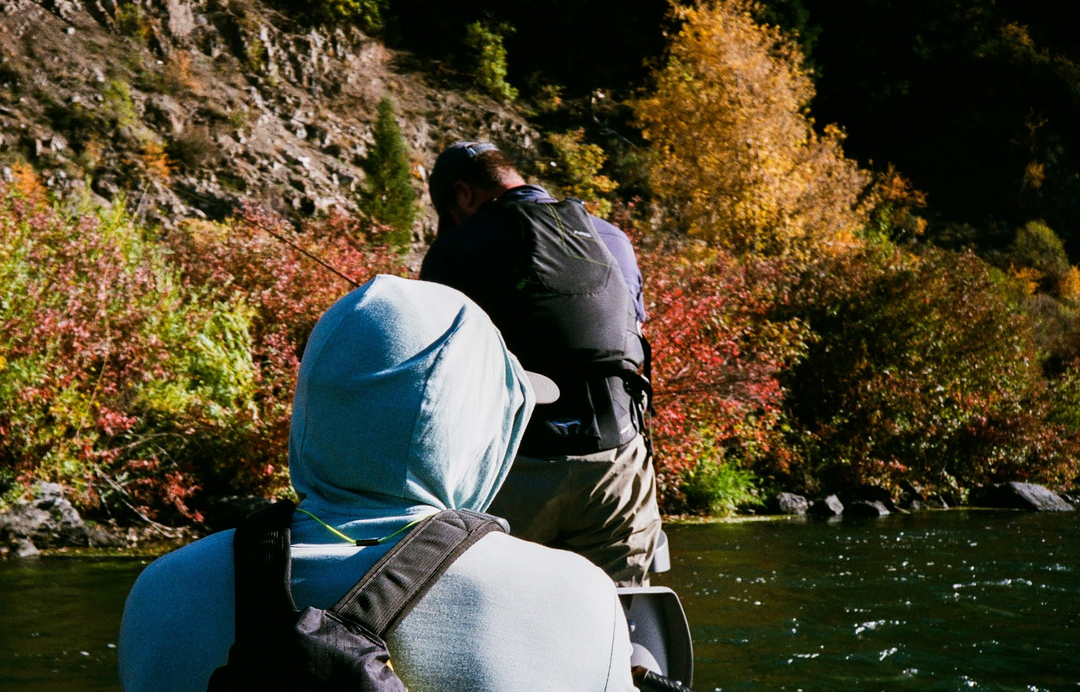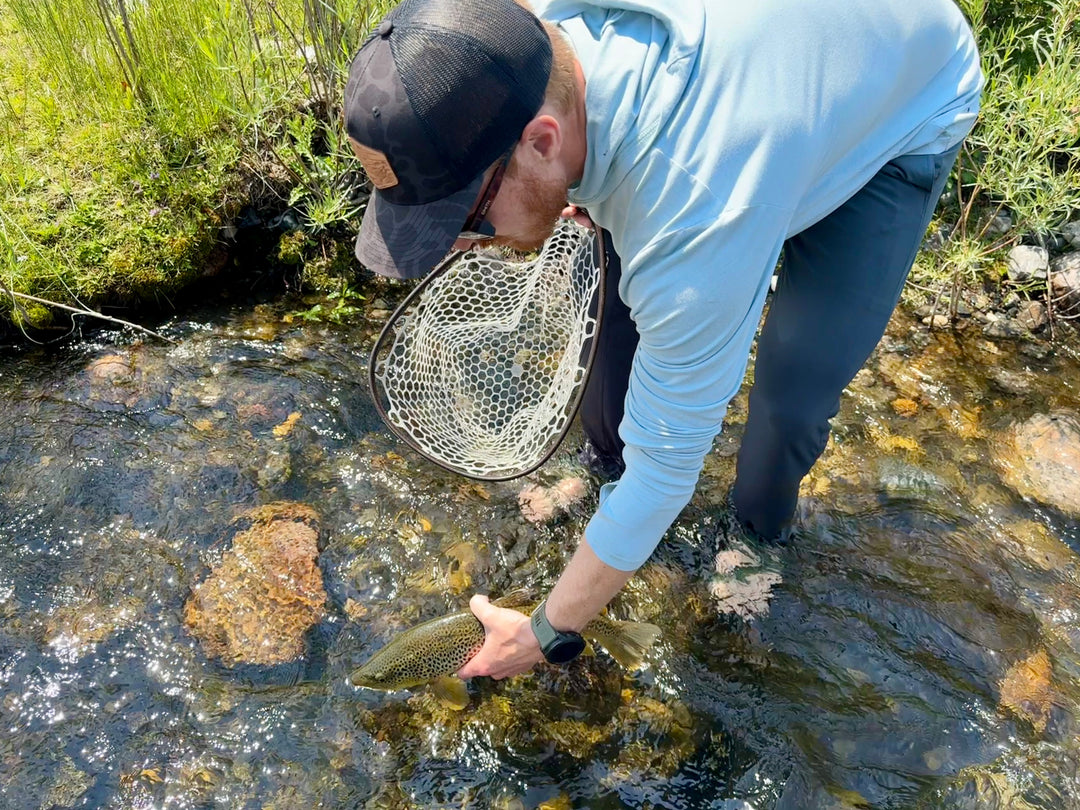Fishing in a Inflatable Boat vs Whitewater Rafts

Historically, the only boat option for fly fishing was the iconic drift boat. But as fly fishing grew in popularity, the secret got out—whitewater rafts became a go-to alternative to expensive and often limiting drift boats. Then, about a decade ago, a new evolution occurred: the introduction of purpose-built inflatable fishing boats. These modern fishing rafts exploded in popularity and remain one of the top choices for serious fly fishermen today looking to get off shore.
Many anglers now look at these two options when looking to fish in an inflatable boat —fishing inflatables and traditional whitewater rafts—and wonder which one is the better option for their local rivers or future trips. At first glance, they may appear similar, but their differences are significant. These distinctions impact everything from stability and gear storage to comfort, safety, and rowing performance.
If you’re trying to decide between a whitewater raft and a modern inflatable fishing boat, you’re not alone. We'll answer that question and break down the key differences to help you understand which boat is right for your needs.
1. Purpose-Built Design

Inflatable fishing boats are designed with one purpose: fly fishing. These boats give anglers the ability to explore miles of water that would be impossible to access by foot. They’re engineered for stability, comfort, and gear accessibility—all while being far more portable and versatile than traditional whitewater rafts.
In contrast, whitewater rafts are also built for moving water, but their primary focus is on carrying people and gear through rapids. They’re made to take hits from rocks, logs, and waves. That makes them great for casual floats or adrenaline-fueled runs—but not ideal for serious angling.
Each boat’s intended design is defined by a range of features we’ll explore in detail below. By the end, you’ll be able to look at a raft’s design specs and determine if it truly fits your fly fishing needs.
2. Width and Stability

Width plays a huge role in how a boat handles and feels on the water. Fishing inflatables are often designed with flatter profiles and a lower center of gravity, making them exceptionally stable for standing, casting, or moving around. That stability provides a safer and more comfortable experience while fishing.
Whitewater rafts are usually even wider, which increases their stability for rapids—but that extra size becomes a burden to row. Most fly fishing takes place in Class I-II water with widely spaced rapids, not continuous whitewater. You don’t need the width of a full whitewater raft to fish a calm section of river.
Tip: Anything 75” wide or more typically falls into the whitewater raft category.
That broader footprint may be great for large families looking to float together in one boat—but it’s not ideal when your focus is fly fishing.
![]() 3. Tube Size and Shape
3. Tube Size and Shape

Tube size is measured by diameter, and it’s a major differentiator. (If you want a visual, Maravia’s Grand Canyon gear boat spec sheet offers a great example of how tube diameter is measured.)
Fishing inflatables use smaller, tougher, and more streamlined tubes. These allow for easier movement around the boat and quicker entry and exit. They also keep the raft lighter and lower profile.
Whitewater rafts use large-diameter tubes to help float above big waves—but those same tubes create more drag, add mass, and require more effort to row. Whitewater rafts also have more aggressive rocker (the curve at the front and rear), which helps ride over waves but is unnecessary when you’re floating calmer water to fish.
Tip: Tubes 18” or larger are typically used in whitewater-focused designs.
4. Frame Design & Storage
This is where fishing inflatables really shine.
Fishing-specific frames are built with the angler in mind. You’ll find casting platforms, elevated swivel seats, mounts for coolers, rod holders, and well-thought-out storage. Everything is designed to support long days on the water—whether you're rowing or casting. You just don't need to same amount of room for fishing as you would for a whitewater trip.
Whitewater raft frames, on the other hand, prioritize strength and tie-down points for dry bags and barrels. They’re designed to carry people and supplies through rapids, not hold fly rods or provide a casting deck.
A good inflatable fishing boat gives you the features you need without the whitewater “fluff.” That means built-in storage, anchor systems, rod organization, and cooler access—without having to strap and unstrap 20 different dry bags. You'll continue to have space for coolers, gear boxes, dry bags, nets, a fleet of rods, and anything else you may want for a fun day on the water.
And with whitewater rafts being much larger, they require a correspondingly larger frame—which just adds more weight.
Same theme again: more mass = harder to row.
5. Seating Configurations
Fishing boats typically place the rower in the center, with one angler in front and another behind. These seats are often elevated and have swivels, allowing for maximum comfort and efficiency whether you’re fishing or rowing through wind or long stretches of flatwater.
Whitewater rafts usually rely on thwarts or bench seats. They’re functional for transport but lack comfort, customization, and practicality for fly fishing. You’ll be sitting, standing, and shifting positions constantly—so comfort matters.
6. Weight and Portability
Fishing inflatables are lighter than most whitewater rafts—and the difference can be significant. That reduced weight makes them easier to transport, carry, and portage if necessary. You can inflate, launch, and store them easily, even on solo trips.
Whitewater rafts are heavier, especially when fully rigged with frames and gear. That weight may improve stability in rapids, but it also means more effort on calm water. Unless you’ve got a crew helping, managing a heavy raft can be a chore—before, during, and after your float.
7. Rowing and Handling
Every design element—width, weight, tubes, frames, and seating—affects how a boat rows. When you start stacking up all the small disadvantages of whitewater rafts for fly fishing, it’s easy to see how modern fishing inflatables come out on top.
In fly fishing, rowing isn’t just about moving downstream. You’re constantly adjusting position, slowing the drift, and setting your clients and buddies up for more opportunities for great shots to throughly work every bit of water. That means you’re rowing 10–20 times more than someone just riding in a whitewater raft. The ease of rowing on a river is immediately noticeable.
Fishing inflatables are smaller, lighter, and more efficient. You’re moving less mass, less surface area, and dealing with less drag. This makes it easier to hold a line, work a seam, or pause on a pocket.
Even the oars make a difference. Cataract’s Streamlite shaft, often used on fishing boats, weighs just 3 lbs—compared to their 5 lb SGG shaft for whitewater. That 2 lb difference per oar adds up quickly when you’re rowing for hours every float.
And if you're in the market to upgrade your oars we can't recommend the Streamlites enough. Once you row with them you'll love the way they feel on the water.
What is the Best Boat for Fly Fishing?
Choose an inflatable boat if:
-
Your primary goal is fly fishing
-
You want to anchor and cast comfortably
-
You value versatility, superior rowing, and portability
-
You plan to row long stretches on every float
Choose a whitewater raft if:
-
You’re running Class III+ rapids
-
You’re hauling a large crew and lots of gear
-
You’re prioritizing adventure over angling
Inflatable Fishing Boats Are the Best Option for Fly Fishing

Modern fishing inflatables have transformed the fly fishing experience. They’re actually designed for anglers—offering performance, comfort, versatility, and customization in a more compact package that traditional rafts simply can’t match. Truly the ticket for the vast majority of fly fishermen.
Whether you’re a weekend warrior or a full-time guide, these boats allow you to fish smarter, stay safer, and enjoy your time on the water more than ever before.
Once you fish from one, you’ll agree and understand why anglers never want to go back.
There are dozens of models out there, so take the time to find the one that fits your needs. Not all modern fishing rafts are created equal. At Ridgeline Rafts, we build boats for serious anglers that combine the stability and toughness of a whitewater raft with the lightweight performance and handling of a modern fishing craft.
If you’re looking for a durable, high-quality fishing boat that will serve you for years to come, we’ve got the answer.
Need help choosing the right boat—or looking for talking points to sell your spouse on the idea? Shoot us an email at sales@ridgelinerafts.com or fill out the contact form on our site. We’re happy to help you figure out the perfect setup based on your fishing goals.




